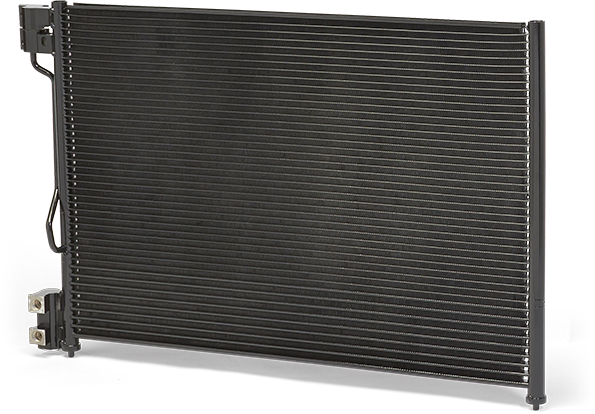Condenser

The condenser is located in the front of the vehicle between the radiator and the front grille as part of the climate control (or air conditioning) system. Like a radiator, the condenser uses the properties of the airflow of the moving vehicle to cool down the coolant that serves to lower the temperature of the passenger compartment.
- Condensers are nitrogen leak-tested to ensure being leak-free and damage-free
- High-density fins designed for maximum cooling efficiency
- Manufactured with heavy gauge mounting brackets to reduce movement and vibration
- Manufactured with precise mounting holes and brackets to ensure ease of installation
- OE design to ensure exact fit, form and function for an easy drop-in installation
- Condenser with welded receiver-drier also available

Common Condenser Failure Symptoms
- Reduced cooling
- Leaking coolant
- Deposits in the coolant
- Reducing coolant level
Common Causes of Failure
Collision
As a front-end part, condensers are often involved in collisions. Even if the initial impact does not damage the part, smaller leaks in the cooling system can be found afterwards which also warrants radiator replacement.
Other common causes
- Lack of maintenance
- Overheating
- Normal wear and tear
- Refrigerant Leak
- Road debris
- Compressor failure
Parallel flow condensers are susceptible to severe internal blockage after a compressor failure. When the compressor fails, always include a Spectra Premium condenser to ensure complete repair.
Replacement Importance
Climate control is not critical to the operation of a vehicle, but the air conditioning system is important for the passengers’ comfort, particularly during hot summer periods. Air conditioning failure does not impact passenger heating, since the heater is actually part of the cooling system.
